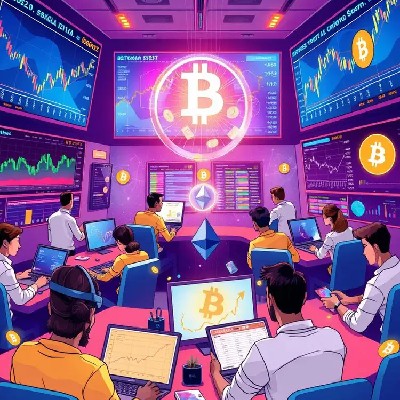
Terkait koin
Kalkulator harga
Riwayat harga
Prediksi harga
Analisis teknikal
Panduan pembelian koin
Kategori Kripto
Kalkulator profit

Harga EthereumETH
Bagaimana perasaan kamu tentang Ethereum hari ini?
Harga Ethereum hari ini
Berapa harga tertinggi ETH?
Berapa harga terendah ETH?
Mengapa harga ETH selalu berfluktuasi? Faktor-faktor apa saja yang memengaruhi kinerja harga ETH?
Prediksi harga Ethereum
Kapan waktu yang tepat untuk membeli ETH? Haruskah saya beli atau jual ETH sekarang?
Berapa harga ETH di 2026?
Berapa harga ETH di 2031?
Riwayat harga Ethereum (IDR)
 Harga terendah
Harga terendah Harga tertinggi
Harga tertinggi 
Informasi pasar Ethereum
Riwayat kapitalisasi pasar Ethereum
Pasar Ethereum
Kepemilikan Ethereum
Matriks distribusi kepemilikan Ethereum
Kepemilikan Ethereum berdasarkan konsentrasi
Alamat Ethereum berdasarkan waktu kepemilikan

Peringkat Ethereum
Tentang Ethereum (ETH)
Ethereum adalah blockchain generasi kedua yang memungkinkan pembuatan dan pengoperasian aplikasi terdesentralisasi (dApp) dan kontrak pintar . Diciptakan pada tahun 2015 oleh Vitalik Buterin, Ethereum terkenal karena membawa kontrak pintar ke dalam dunia blockchain. Biaya setiap transaksi dan eksekusi kontrak pintar di Ethereum diukur dalam gas.
Dengan ekosistem dApp terbesar, Ethereum juga berfungsi sebagai tulang punggung untuk banyak solusi Layer 2, seperti Arbitrum dan Polygon yang menyediakan pemrosesan transaksi yang lebih cepat dan lebih murah.
Apa itu Ethereum (ETH)?
Ethereum adalah mata uang kripto terbesar kedua berdasarkan kapitalisasi pasar , setelah Bitcoin. Mata uang kripto ini dikembangkan oleh programmer asal Rusia-Kanada, Vitalik Buterin, dan secara resmi diluncurkan pada tanggal 30 Juli 2015. Ether, mata uang kripto native Ethereum, memberdayakan ekosistem dengan memungkinkan transaksi, mengeksekusi kontrak pintar, dan mengompensasi node untuk sumber daya komputasi. Gwei adalah unit Ether yang lebih kecil, dengan satu Gwei sama dengan 0,000000001 ETH (sepersemiliar ETH).
Ethereum diluncurkan melalui Initial Coin Offering (ICO) antara tanggal 22 Juli dan 2 September 2014. Selama ICO, peserta dapat membeli Ether (ETH) dengan Bitcoin (BTC) dengan tarif 2.000 ETH per BTC—sekitar $0,31 per ETH. ICO berhasil mengumpulkan lebih dari $18 juta, menjadikannya salah satu acara penggalangan dana yang paling sukses di dunia mata uang kripto. Sejak diluncurkan, Ethereum telah menyediakan jaringan terdesentralisasi bagi para pengembang dan pengguna untuk membangun dan berinteraksi dengan aplikasi berbasis blockchain tanpa ketergantungan pada perantara yang tersentralisasi.
Siapa yang mendirikan blockchain Ethereum?
Ethereum memiliki delapan co-founder:
• Vitalik Buterin - Visioner utama yang menulis whitepaper Ethereum.
• Gavin Wood - Menulis Yellow Paper dan menciptakan bahasa pemrograman Solidity.
• Joseph Lubin - Pendiri ConsenSys, sebuah perusahaan teknologi blockchain.
• Anthony Di Iorio - Seorang investor awal di Ethereum.
• Mihai Alisie - Membantu mendirikan Ethereum Foundation.
• Amir Chetrit - Kontributor awal yang kemudian mundur dari proyek ini.
• Charles Hoskinson - Co-founder Ethereum yang kemudian mendirikan blockchain Cardano.
• Jeffrey Wilcke - Pengembang utama di balik Go Ethereum (Geth).
Pada tahun 2024, Vitalik Buterin adalah satu-satunya co-founder yang masih aktif bekerja di Ethereum. Yang lainnya telah pindah untuk memimpin atau membuat perusahaan blockchain baru.
Sejarah Ethereum
2013: Vitalik Buterin, yang merupakan co-founder dari Bitcoin Magazine, mengusulkan Ethereum. Dia membayangkan sebuah platform blockchain untuk aplikasi terdesentralisasi (dApp) yang didukung oleh kontrak pintar.
2014: Ethereum diumumkan pada Konferensi Bitcoin Amerika Utara (North American Bitcoin Conference). Initial Coin Offering (ICO) Ethereum berhasil mengumpulkan lebih dari $18 juta.
2015: Ethereum meluncurkan versi live pertamanya, Frontier, pada tanggal 30 Juli, yang memungkinkan para pengembang untuk membangun dApp.
2016: Ethereum melakukan peningkatan pertamanya, Homestead, dan menghadapi peretasan DAO, yang mengarah pada hard fork yang membagi jaringan menjadi Ethereum (ETH) dan Ethereum Classic (ETC).
2017: Peningkatan Byzantium meningkatkan privasi dan skalabilitas dengan sembilan Ethereum Improvement Proposal (EIP).
2019: Peningkatan Constantinople dan Istanbul mengoptimalkan biaya gas, meningkatkan interoperabilitas, dan meningkatkan efisiensi zero-knowledge proof.
2020: Ethereum meluncurkan Beacon Chain, memperkenalkan Proof-of-Stake (PoS) sebagai bagian dari roadmap Ethereum 2.0.
2021: Peningkatan Berlin dan London Hard Fork mengoptimalkan biaya dan memperkenalkan EIP-1559, membakar sebagian biaya transaksi.
2022: Ethereum bertransisi ke PoS dengan The Merge pada tanggal 15 September, mengurangi konsumsi energi hingga ~99,95%.
2023: Peningkatan Shanghai dan Capella memungkinkan penarikan ETH yang distaking dan proses PoS yang dioptimalkan.
2024: Ethereum terus berfokus pada solusi penskalaan, seperti sharding, untuk meningkatkan kecepatan transaksi dan mengurangi biaya.
Cara kerja Ethereum
Ethereum adalah platform blockchain sumber terbuka yang terdesentralisasi di mana para pengembang dapat membuat dan menjalankan kontrak pintar—program yang dapat dieksekusi sendiri yang memberdayakan berbagai macam aplikasi terdesentralisasi (dApp). Ethereum beroperasi pada jaringan komputer global (node) yang memproses transaksi dan mencatatnya di blockchain, memastikan keamanan dan transparansi. Mata uang kripto asli Ethereum, Ether (ETH), digunakan untuk membayar biaya gas untuk transaksi, menjalankan kontrak pintar, dan mendukung jaringan melalui staking.
Setelah Ethereum bertransisi ke Proof-of-Stake (PoS) pada tahun 2022, validator menggantikan penambang untuk mengamankan jaringan. Untuk menjadi validator, kamu perlu menstaking 32 ETH, yang dikunci untuk membantu menjaga keamanan dan efisiensi jaringan. Sebagai imbal hasilnya, validator mendapatkan insentif karena telah memverifikasi dan menambahkan blok baru.
Apa yang membuat Ethereum unik?
Dengan lebih dari satu juta token yang dibangun di atas blockchainnya dan miliaran dolar yang mengalir melalui aplikasi terdesentralisasi (dApp), Ethereum telah mendefinisikan ulang kemungkinan teknologi blockchain. Ethereum mendukung token ERC-20 seperti USDT, LINK, dan BNB, yang banyak di antaranya berada di antara mata uang kripto teratas berdasarkan kapitalisasi pasar. Ethereum juga memberdayakan pasar token non-fungible (NFT) yang berkembang pesat, memungkinkan aset digital yang unik dalam game, seni, dan banyak lagi. Peningkatan EIP-1559 menambahkan elemen deflasi ke dalam ekosistemnya dengan membakar sebagian biaya gas, yang semakin memperkuat model ekonominya.
Dengan minat global yang tercermin dalam pasangan perdagangan seperti ETH ke USD dan ETH ke EUR, Ethereum terus memimpin dalam membentuk masa depan blockchain.
Apa peningkatan Ethereum berikutnya?
Apa itu peningkatan Ethereum 2.0?
Ethereum 2.0 adalah peningkatan besar pada blockchain Ethereum, diluncurkan secara bertahap dimulai dengan Beacon Chain pada bulan Desember 2020. Perubahan yang paling menonjol adalah transisi dari Proof-of-Work (PoW) ke Proof-of-Stake (PoS) di The Merge, yang diselesaikan pada bulan September 2022. Pergeseran ini secara signifikan mengurangi konsumsi energi dan meningkatkan keamanan jaringan.
Peningkatan Ethereum Pectra
Peningkatan besar Ethereum berikutnya, Prague-Electra (Pectra), akan dilakukan pada awal tahun 2025. Peningkatan ini akan meningkatkan skalabilitas, efisiensi, dan kegunaan melalui fitur-fitur utama seperti transaksi batch (EIP-3074), peningkatan batas staking (EIP-7251), dan pengurangan penyimpanan node melalui Verkle Trees (EIP-2935). Pelajari lebih lanjut tentang Peningkatan Pectra dan bagaimana peningkatan ini akan meningkatkan pengalaman Ethereum kamu.
Apakah peningkatan Ethereum memengaruhi harga ETH?
Peningkatan Ethereum dapat memengaruhi harga ETH, tetapi efeknya tidak selalu langsung. Peningkatan besar, seperti The Merge pada tahun 2022, cenderung menarik minat pasar dan dapat menyebabkan fluktuasi harga, termasuk perubahan harga live Ethereum. Peningkatan ini bertujuan untuk meningkatkan skalabilitas, keamanan, dan efisiensi energi jaringan, yang dapat dilihat sebagai perkembangan positif untuk prospek jangka panjang Ethereum. Namun, perubahan harga juga dipengaruhi oleh faktor lain, seperti kondisi pasar yang lebih luas dan sentimen investor, sehingga dampak peningkatan terhadap harga ETH tidak selalu dapat diprediksi.
Untuk mendapatkan insight secara real-time, banyak trader yang melacak harga ETH saat ini bersama dengan grafik Ethereum untuk lebih memahami fluktuasi jangka pendek dan perilaku pasar.
Apa saja kasus penggunaan potensial untuk Ethereum?
Ethereum memungkinkan berbagai kasus penggunaan karena fleksibilitas dan sifatnya yang terdesentralisasi:
• Keuangan Terdesentralisasi (DeFi): Layanan keuangan tanpa perantara (mis., pinjaman, exchange).
• Kontrak pintar: Persetujuan otomatis dalam industri seperti asuransi, real estat, dan hukum.
• Token Non-Fungible (NFT): Kepemilikan digital dalam karya seni, barang koleksi, dan media.
• Organisasi Otonom Terdesentralisasi (DAO): Organisasi yang dikelola oleh komunitas.
• Manajemen rantai pasokan: Pelacakan barang secara transparan dan verifikasi keaslian.
• Gaming: Model Play-to-Earn (P2E) dan aset tokenisasi dalam game.
• Verifikasi identitas: Pengelolaan identitas digital dan data pribadi yang aman.
Di mana saya bisa mendapatkan informasi terbaru tentang berita Ethereum?
Jika kamu mencari pembaruan Ethereum dan berita kripto terkini, Bitget siap membantu kamu. Berita Bitget terus memberimu informasi dengan pembaruan real-time, tren pasar, dan semua peristiwa terbaru di dunia kripto
Siap untuk mempelajari lebih lanjut? Akademi Bitget adalah tempat yang tepat, menawarkan panduan sederhana, tips trading, dan wawasan untuk pemula dan trader berpengalaman.
Apa selanjutnya bagi Ethereum?
Ke depannya, pengembangan Ethereum terus berlanjut dengan fokus pada peningkatan skalabilitas, keamanan, dan desentralisasi:
• Sharding - Pembaruan besar yang akan membagi Ethereum menjadi potongan-potongan yang lebih kecil (shard) untuk memproses transaksi secara paralel, meningkatkan kecepatan dan menurunkan biaya.
• Solusi Layer 2 - Teknologi seperti Optimism dan Arbitrum akan terus mengurangi biaya transaksi dan meningkatkan skalabilitas.
• EIP-4844 (Proto-Danksharding ) - Ini akan memperkenalkan jenis transaksi baru untuk mengurangi biaya gas dan meningkatkan ketersediaan data.
• Peningkatan EVM - Peningkatan pada Mesin Virtual Ethereum akan meningkatkan kinerja dan mendukung penerapan yang lebih kompleks.
• Optimalisasi PoS - Peningkatan yang sedang berlangsung pada sistem Proof-of-Stake Ethereum akan meningkatkan keamanan, desentralisasi, dan insentif staking.
Mulailah berinvestasi dengan mengakses halaman perdagangan Ethereum di Bitget . Harga Ethereum diperbarui dan tersedia secara real-time di Bitget.
ETH ke mata uang lokal
- 1
- 2
- 3
- 4
- 5
Cara Membeli Ethereum(ETH)

Buat Akun Bitget Gratis Kamu

Verifikasi Akun Kamu

Konversi Ethereum ke ETH
Trading futures perpetual ETH
Setelah berhasil mendaftar di Bitget dan membeli USDT atau token ETH, kamu bisa mulai trading derivatif, termasuk perdagangan futures dan margin ETH untuk meningkatkan penghasilanmu.
Harga ETH saat ini adalah Rp29.68M, dengan perubahan harga 24 jam sebesar -1.04%. Trader dapat meraih profit dengan mengambil posisi long atau short pada futures ETH.
Bergabunglah di copy trading ETH dengan mengikuti elite trader.
Berita Ethereum



Peringkat toko aplikasi Uniswap di AS melonjak setelah kemenangan pemilu pro-kripto tetapi sejak itu anjlok dari #99 ke #364. Berikut adalah kutipan dari buletin Data dan Wawasan The Block.
Listing terbaru di Bitget
Beli lebih banyak
FAQ
Berapa harga Ethereum hari ini?
Berapa harga satu Ethereum (ETH)?
Kapan Ethereum dimulai?
Bitcoin vs. Ethereum: Mana yang lebih baik untuk dibeli?
Berapa total suplai token Ethereum?
Berapa prediksi harga Ethereum pada tahun 2025?
Berapa harga Ethereum saat ini?
Berapa volume perdagangan 24 jam dari Ethereum?
Berapa harga tertinggi sepanjang masa (ATH) dari Ethereum?
Bisakah saya membeli Ethereum di Bitget?
Apakah saya bisa mendapatkan penghasilan tetap dari berinvestasi di Ethereum?
Di mana saya bisa membeli Ethereum dengan biaya terendah?
Di mana saya dapat membeli Ethereum (ETH)?
Bagian video — verifikasi cepat, trading cepat

Insight Bitget




Aset terkait




























Data Sosial Ethereum
Dalam 24 jam terakhir, skor sentimen media sosial untuk Ethereum adalah 3.2, dan sentimen media sosial terhadap tren harga Ethereum adalah Bullish. Skor media sosial Ethereum secara keseluruhan adalah 234,519,440, yang berada di peringkat 3 di antara semua mata uang kripto.
Menurut LunarCrush, dalam 24 jam terakhir, mata uang kripto disebutkan di media sosial sebanyak 1,058,120 kali, di mana Ethereum disebutkan dengan rasio frekuensi 16.34%, berada di peringkat 2 di antara semua mata uang kripto.
Dalam 24 jam terakhir, terdapat total 394,780 pengguna unik yang membahas Ethereum, dengan total penyebutan Ethereum sebanyak 172,877. Namun, dibandingkan dengan periode 24 jam sebelumnya, jumlah pengguna unik peningkatan sebesar 4%, dan jumlah total penyebutan peningkatan sebesar 20%.
Di Twitter, ada total 6597 cuitan yang menyebutkan Ethereum dalam 24 jam terakhir. Di antaranya, 30% bullish terhadap Ethereum, 9% bearish terhadap Ethereum, dan 60% netral terhadap Ethereum.
Di Reddit, terdapat 2118 postingan yang menyebutkan Ethereum dalam 24 jam terakhir. Dibandingkan dengan periode 24 jam sebelumnya, jumlah penyebutan penurunan sebesar 8% .
Semua tinjauan sosial
3.2